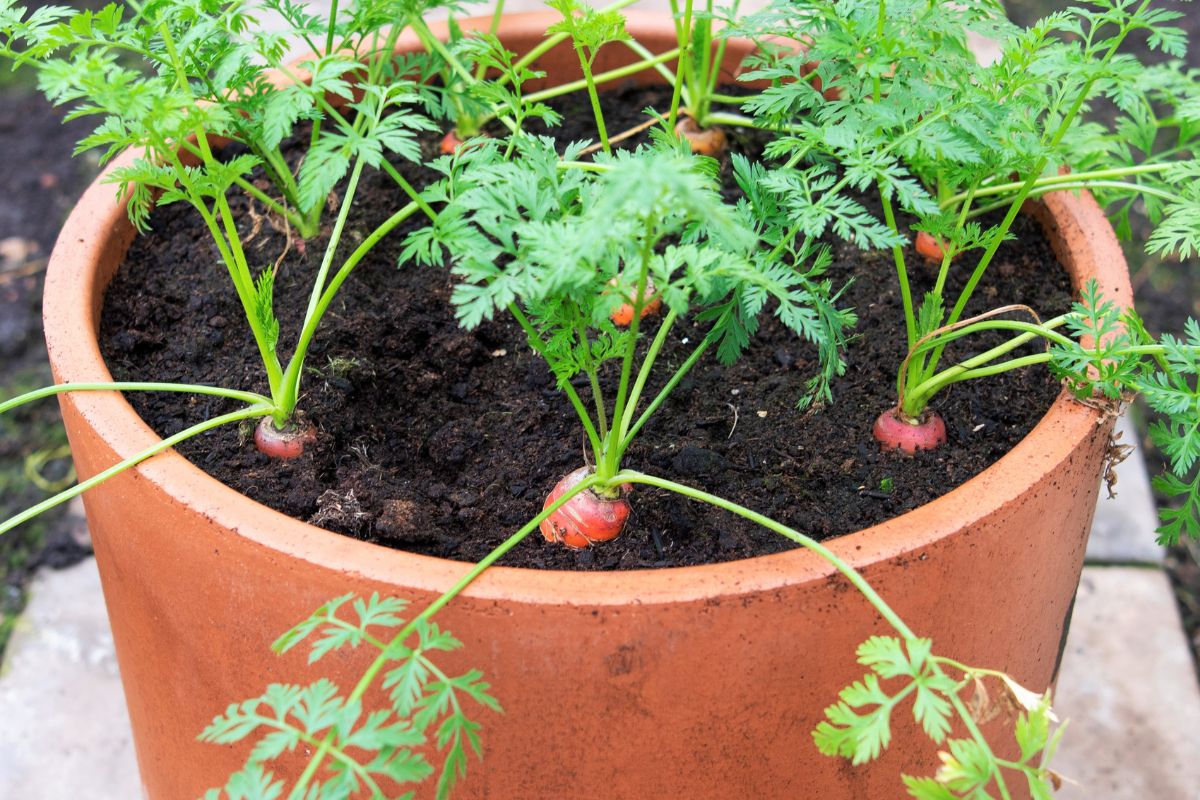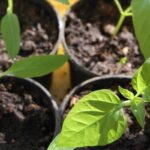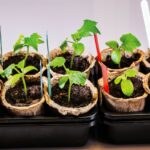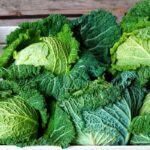Carrots are a staple in many households, finding their way into salads, stews, and as a crunchy snack.
Their sweet, earthy flavor makes them a popular choice for gardeners and food enthusiasts alike. But what if you don’t have a spacious garden to grow carrots?
Fear not! We’re here to show you how to grow these delicious root vegetables right in the comfort of your own home in containers.
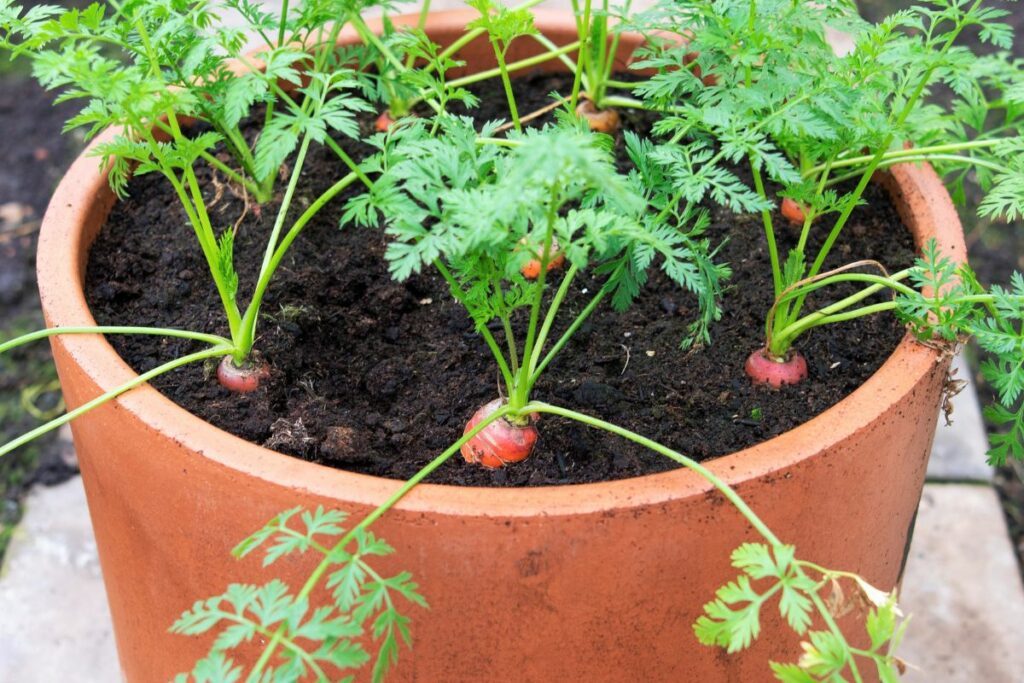
Growing carrots in containers is a great solution for those with limited outdoor space or less-than-ideal soil conditions.
Whether you have a small patio or a balcony or simply want to control the growing environment, this guide will walk you through the steps to produce your own homegrown carrots, full of flavour and packed with nutrients.
Why Grow Carrots In Containers?
Before we dive into the nitty-gritty of container carrot gardening, let’s discuss why this method is a fantastic choice. There are several compelling reasons:
Space Efficiency
Containers take up minimal space, making them ideal for urban gardeners or those with limited outdoor real estate.
Space Efficiency
Containers take up minimal space, making them ideal for urban gardeners or those with limited outdoor real estate.
Soil Control
You can ensure the quality of your soil by using a well-balanced potting mix, eliminating the worry of poor garden soil quality.
Pest Control
Containers can be moved and placed strategically, reducing the risk of pests and diseases.
Accessibility
With containers, you can place your carrot garden at a convenient height, making it easier to tend to and harvest your crop.
Extended Growing Season
Containers allow you to control the environment better, potentially extending the growing season.
Now that you understand why container gardening is a viable option let’s embark on your carrot-growing journey!
Selecting The Right Container For Your Carrots
To successfully grow carrots in containers, your first step is choosing the right container. You’ll need a container that is at least 12 inches deep to accommodate carrot roots, which can grow quite long. Here are some container options to consider:
- Garden Pots: Traditional garden pots work well for container gardening. They come in various sizes and materials, such as clay, plastic, and terracotta.
- Grow Bags: These lightweight, breathable bags are an excellent choice for growing carrots. They provide good aeration and can be folded for easy storage.
- Window Boxes: If you have a narrow space like a windowsill or balcony railing, window boxes can be a creative solution.
- Barrels or Tubs: Larger containers like barrels or tubs can hold several carrot plants and are great for a bountiful harvest.
- Raised Beds: Growing your carrots in raised beds can be beneficial for easier weeding and soil maintenance.
- Stackable Containers: These vertical plants are perfect for maximizing space and are ideal for gardeners with limited room.
When choosing a container, ensure that it has drainage holes at the bottom to prevent overwatering and root rot. Adequate drainage is vital for healthy carrot growth.
Selecting The Right Carrot Varieties
Carrots come in various shapes, colours, and sizes. When selecting a carrot variety for container gardening, consider the following factors:
- Dwarf or Miniature Varieties: Smaller carrot varieties are well-suited for containers. Look for varieties like “Little Finger,” “Thumbelina,” or “Paris Market.”
- Round or Short Varieties: Carrots that don’t require extensive depth are ideal for containers. “Round Romeo” and “Parmex” are good choices.
- Colour Preference: Carrots come in various colours, including the classic orange, deep purple, and even white. Choose the colour that suits your taste and gardening aesthetics.
- Flavour Profile: Different carrot varieties offer varying degrees of sweetness and earthy flavours. Experiment with different flavours to find your favourite.
- Days to Maturity: Check the seed packet for the estimated days to maturity to plan your planting schedule.

Preparing Your Container For Your Carrots
Now that you have your container and carrot seeds, it’s time to prepare your carrot-growing haven.
Selecting Potting Mix
Carrots prefer well-draining, sandy soil. Choose a high-quality potting mix or make your own by mixing equal potting soil, sand, and compost.
Filling The Container
Fill your container with the potting mix, leaving about an inch from the top to allow for watering without spillage.
Thinning
Carrots tend to grow close together, so thinning is essential. After your carrot seedlings have sprouted to about 2 inches tall, carefully plush the weaker plants, leaving about 2-3 inches of space between the remaining ones.
Planting Carrot Seeds
Now, it’s time to sow your carrot seeds. Following these steps for successful planting:
- Seed Spacing: Sprinkle the carrot seeds evenly across the soil surface. Carrots need some space to grow, so avoid overcrowding.
- Covering the Seeds: Gently press the seeds into the soil, but avoid burning them too deep. A light dusting of soil over the seeds is sufficient.
- Watering: Give your newly planted seeds a good, gentle watering, making sure not to displace them.
- Mulching: Consider adding a layer of mulch to help retain moisture and prevent weed growth.
Troubleshooting Common Issues
While growing carrots in containers can be a stewarding experience, you may encounter some common problems. Here are solutions to a few of them:
- Misshapen Carrots: Carrots can become misshapen if they encounter obstacles in the soil, such as rocks or hard clumps. Ensure that your potting mix is well-prepared and free of debris.
- Cracked Carrots: Irregular watering can cause carrots to crack. Maintain consistent moisture to prevent this issue.
- Pest Damage: If you notice signs of pest damage, such as holes in leaves or gnawed roots, consider using natural pest control methods or placing a protective barrier around your container.
- Inadequate Growth: If your carrot growth is stunted, it may be due to overcrowding or poor soil quality. Thin the seedlings and ensure your container has well-draining soil.
Frequently Asked Questions
Carrots can be grown in various types of containers, but it’s essential to choose one that’s at least 12 inches deep and has proper drainage.
Carrots thrive in well-draining, sandy soil. You can use a high-quality potting mix or create your own by blending potting soil, sand, and compost.
Final Thoughts
By following these steps, you’ll have the joy of stepping onto your balcony or patio, pulling a crisp, vibrant carrot from your container, and enjoying the delicious, earthy goodness that only homegrown carrots can provide.
Happy gardening, and may your container carrots thrive and fill your kitchen with flavour and nutrition.
- Can You Grow Bell Peppers Indoors? A Guide For New Gardeners - November 14, 2023
- Composting Basics: Can You Compost Mushrooms? - November 6, 2023
- A Gardener’s Guide To Growing Carrots In Raised Beds - November 1, 2023

